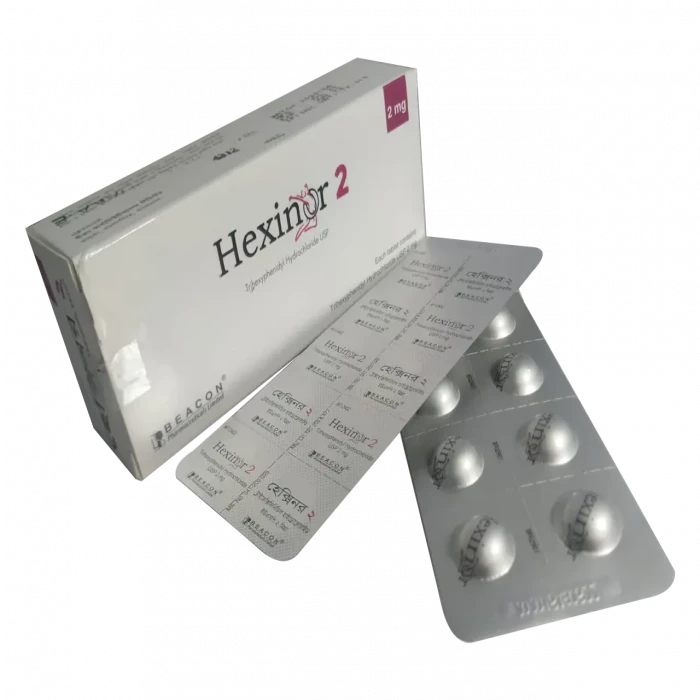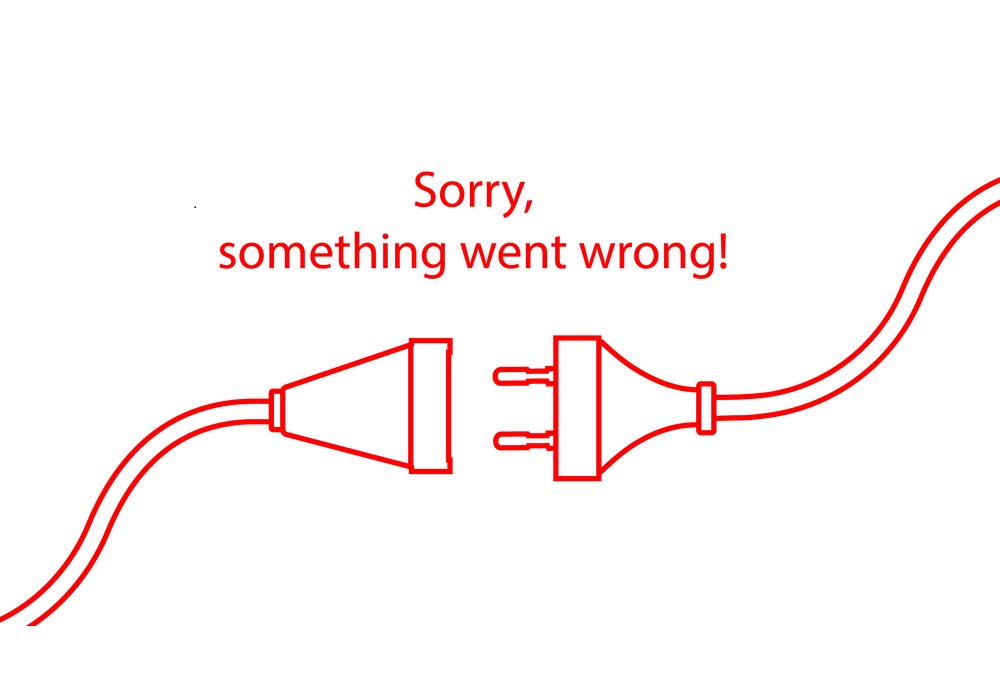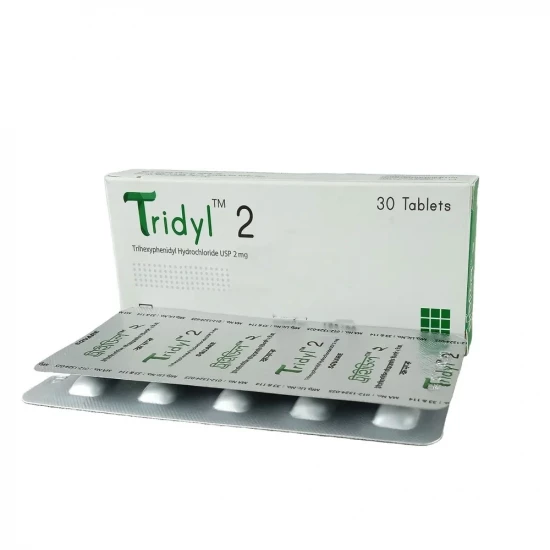
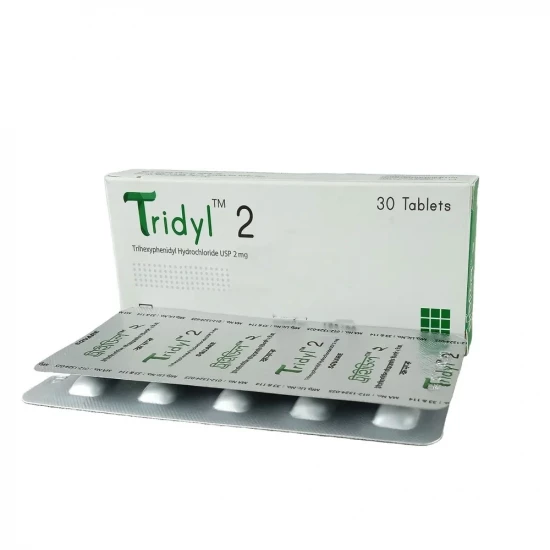
✔ 100% Authentic Product
👁️ Currently Viewing 2049
Tridyl 2mg Tablet | 1 Strip
Tridyl is used as an adjunctive therapy in all types of Parkinsonism, including postencephalitic, arteriosclerotic, and idiopathic forms. It is often prescribed alongside levodopa to enhance symptom control. Additionally, Tridyl is indicated for managing extrapyramidal side effects caused by central nervous system drugs such as dibenzoxazepines, phenothiazines, thioxanthenes, and butyrophenones.
Discount
Price: ৳ 52
MRP:
৳
55
6%
Off

100% Genuine Products, Guaranteed

Safe & Secure Payments, Always

Fast, Secure & Efficient Delivery

Proper Packaging
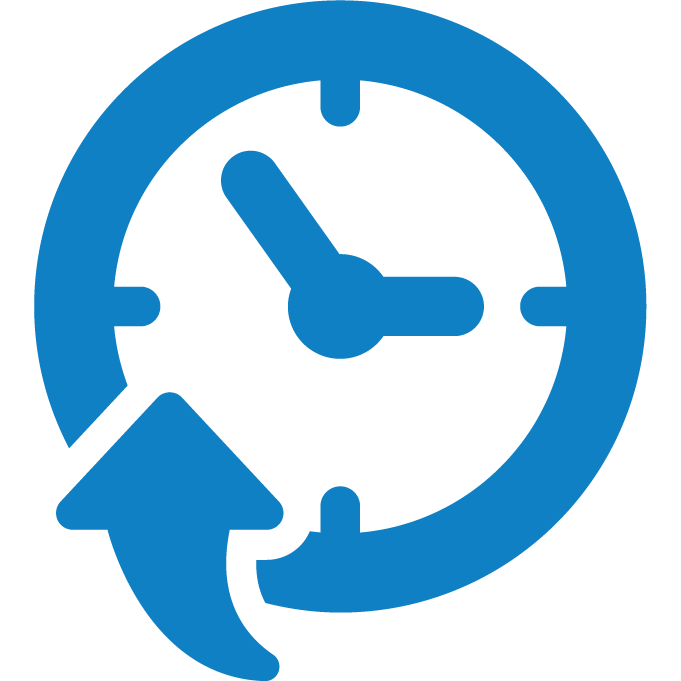 Cash on Delivery - All over Bangladesh
Cash on Delivery - All over Bangladesh Regular Delivery - 12-24 Hours, Dhaka City* Charge Tk.39-59
Regular Delivery - 12-24 Hours, Dhaka City* Charge Tk.39-59 Regular Delivery - 24-48 Hours, Other Cities* Charge Tk.99-110
Regular Delivery - 24-48 Hours, Other Cities* Charge Tk.99-110
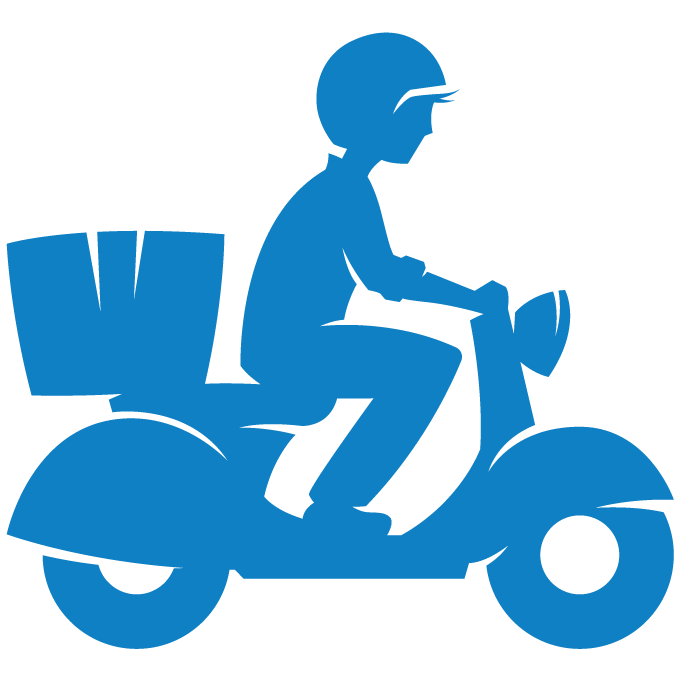 ফ্রি ডেলিভারিঃ - ৯৯৯ টাকা+ অর্ডারে, ঢাকা
শহরে
ফ্রি ডেলিভারিঃ - ৯৯৯ টাকা+ অর্ডারে, ঢাকা
শহরে ফ্রি ডেলিভারিঃ - ২৯৯৯ টাকা+ অর্ডারে, ঢাকার
বাহিরে
ফ্রি ডেলিভারিঃ - ২৯৯৯ টাকা+ অর্ডারে, ঢাকার
বাহিরে
100% Genuine Products, Guaranteed
Safe & Secure Payments, Always
Fast, Secure & Efficient Delivery
Proper Packaging
 Cash on Delivery - All over Bangladesh
Cash on Delivery - All over Bangladesh Regular Delivery - 12-24 Hours, Dhaka City* Charge Tk.39-59
Regular Delivery - 12-24 Hours, Dhaka City* Charge Tk.39-59 Regular Delivery - 24-48 Hours, Other Cities* Charge Tk.99-110
Regular Delivery - 24-48 Hours, Other Cities* Charge Tk.99-110 ফ্রি ডেলিভারিঃ - ৯৯৯ টাকা+ অর্ডারে, ঢাকা
শহরে
ফ্রি ডেলিভারিঃ - ৯৯৯ টাকা+ অর্ডারে, ঢাকা
শহরে ফ্রি ডেলিভারিঃ - ২৯৯৯ টাকা+ অর্ডারে, ঢাকার
বাহিরে
ফ্রি ডেলিভারিঃ - ২৯৯৯ টাকা+ অর্ডারে, ঢাকার
বাহিরে
✅ Description:
Trihexyphenidyl is a non-selective muscarinic acetylcholine receptor antagonist with a higher affinity for the M1 subtype. It binds more readily to central muscarinic receptors in the cerebral cortex than to peripheral ones. Research also suggests that it may influence nicotinic acetylcholine receptor activity, indirectly increasing dopamine release in the striatum. While effective in relieving symptoms of Parkinson’s disease and other movement disorders, its exact mechanism is not fully understood.
Tridyl works by directly inhibiting the parasympathetic nervous system and relaxing smooth muscles. This relaxation occurs both through a direct effect on muscle tissue and indirectly via its parasympathetic inhibition.
✔️ Side Effects
Common: dry mouth, blurred vision, dizziness, mild nausea, nervousness.
Rare: skin rashes, suppurative parotitis, paralytic ileus, psychiatric symptoms (hallucinations, paranoia), urinary retention, cognitive impairment, tachycardia, constipation, dilated pupils, increased intraocular pressure. Abrupt withdrawal can worsen Parkinsonism or cause neuroleptic malignant syndrome.
✔️ Dosage & Administration
Treatment should be individualized, starting with a low dose and gradually increasing, especially in patients over 60. Timing of meals should depend on patient response:
Idiopathic Parkinsonism: Start with 1 mg daily, increasing by 2 mg every 3–5 days until an optimal dose of 6–10 mg/day is reached (some may require 12–15 mg/day).
Drug-Induced Parkinsonism: Usually 5–15 mg/day, starting with 1 mg. Dosage is adjusted based on symptom control and may involve reducing the causative drug.
With Levodopa: Both drugs may require dose adjustment; 3–6 mg/day of Trihexyphenidyl in divided doses is often sufficient.
With Other Parasympathetic Inhibitors: Gradual substitution is recommended.
Daily doses are best divided into three meals, with high doses (>10 mg/day) split into four doses (three with meals, one at bedtime).
Not recommended for pediatric use.
✔️ Interaction
CNS depressants (alcohol, barbiturates, opiates, cannabinoids) may enhance sedative effects. MAO inhibitors and tricyclic antidepressants with anticholinergic properties may intensify side effects. Combined use with neuroleptics may raise the risk of tardive dyskinesia. Dosage adjustments are often needed when used with levodopa.
✔️ Contraindications:
Contraindicated in patients with hypersensitivity to Trihexyphenidyl or with narrow-angle glaucoma, as blindness from long-term use in such cases has been reported.
✔️ Pregnancy & Lactation
Use only if the benefits outweigh the potential risks. Unknown if excreted in breast milk; may reduce lactation. Exercise caution in nursing mothers.
✔️ Precautions & Warnings
- Assess intraocular pressure before and during treatment.
- Avoid in narrow-angle glaucoma; may trigger acute angle closure.
- Use cautiously in hot environments or with other anticholinergics due to the risk of anhidrosis and hyperthermia.
- Be aware of the potential for Neuroleptic Malignant Syndrome after dose reduction or abrupt discontinuation.
✔️ Storage:
Store below 30°C, in a dry place, protected from light.
⚠️Disclaimer:
At ePharma, we’re committed to providing accurate and accessible health information. However, all content is intended for informational purposes only and should not replace medical advice from a qualified physician. Please consult your healthcare provider for personalized guidance. We aim to support, not substitute, the doctor-patient relationship.




